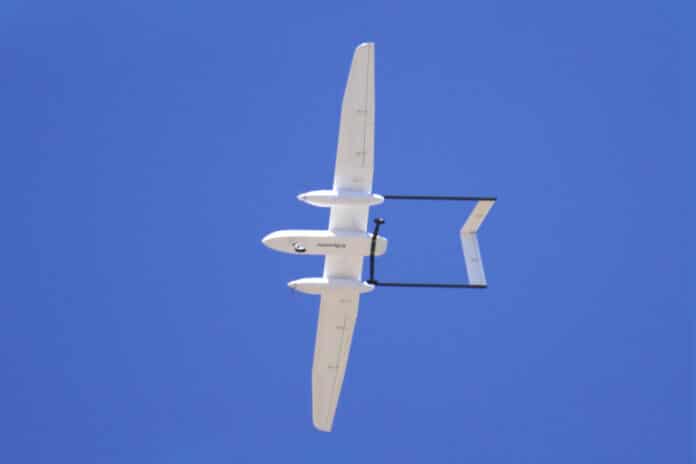The race to use hydrogen fuel cells – or just hydrogen itself – to fly planes is speeding up. The Singaporean H3 Dynamics successfully completed the first flight of a 25kg test aircraft equipped with its hydrogen propulsion system in France. The next step is to scale up the power level for a 2-4 passenger aircraft by the end of 2023.
The company announced its hydrogen aviation concept back in 2018 and completed its first working hydrogen propulsion nacelle prototype in November 2021. After that, in July this year, the first distributed pod system took to the skies on a scaled-down aircraft at the “Hub Drones – Systematic” airfield near Paris. The hydrogen flight received clearance from the French civil air authorities (DGAC).
H3 Dynamics’ autonomous nacelle concept addresses technical, safety, and cost challenges hydrogen aircraft developers could face at some point in the future. It achieves this by placing hydrogen and smaller fuel cells across a series of collaborative propulsion nacelles under the wings.
Other, higher-visibility hydrogen aircraft proponents will fly larger size aircraft much sooner – but they will do so by converting existing aircraft using fuel cells sourced from the automotive world – and storing large amounts of gas or liquid hydrogen inside the main fuselage. Distributing small systems solves technical headaches, such as thermal management, and increases safety through multiple redundancies.
H3 Dynamics’ 25kg test aircraft has a range of 900 km (560 miles) on liquid hydrogen and 350 km (217 miles) on pressurized hydrogen. Its externalized nacelle design also frees up 30L of fuselage volume with no hydrogen nor any powertrain elements inside. H3 Dynamics’ hydrogen propulsion nacelles could be retrofitted to battery-powered unmanned eVTOL or fixed-wing cargo drones.
H3 Dynamics began working on airspace safety with world-leading air traffic control firms in preparation for long-duration unmanned hydrogen flights. It has been building experience with high-volume enterprise data services being deployed in smart cities such as Singapore and gradually coupling these with drone-agnostic charging stations.
H3 Dynamics is now working on a next-generation platform powered by six independent hydrogen-electric nacelle systems. The aircraft will feature fast refueling and will be used as a test bed for H3 Dynamics hydrogen-electric propulsion technology moving forward.
